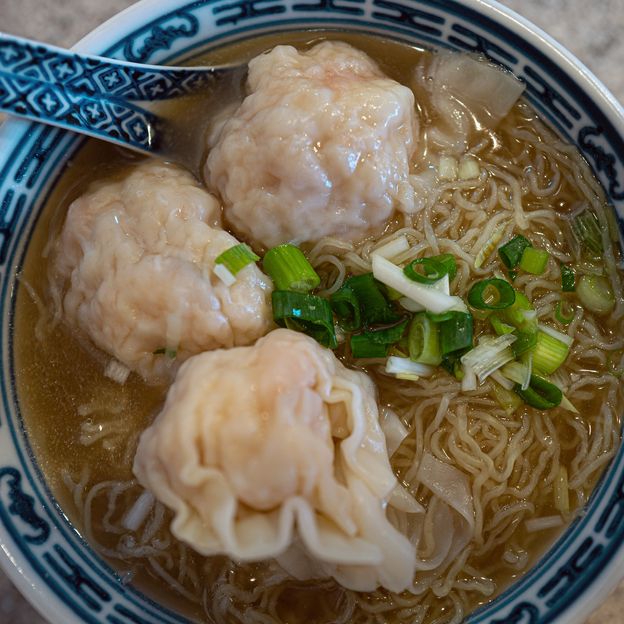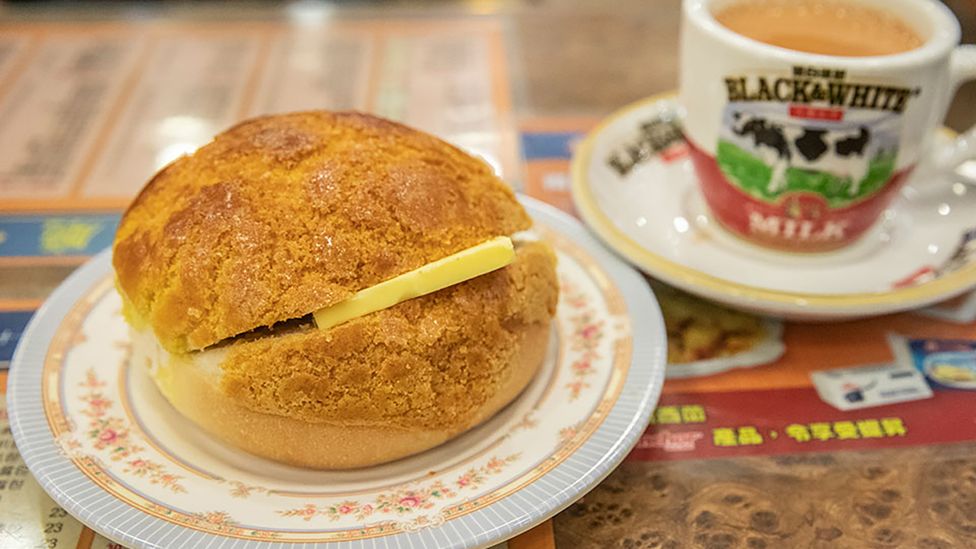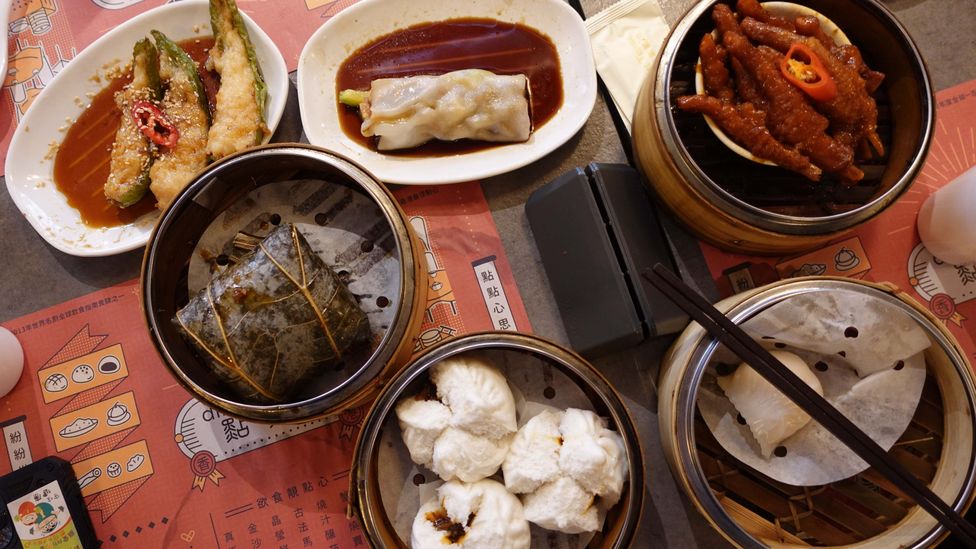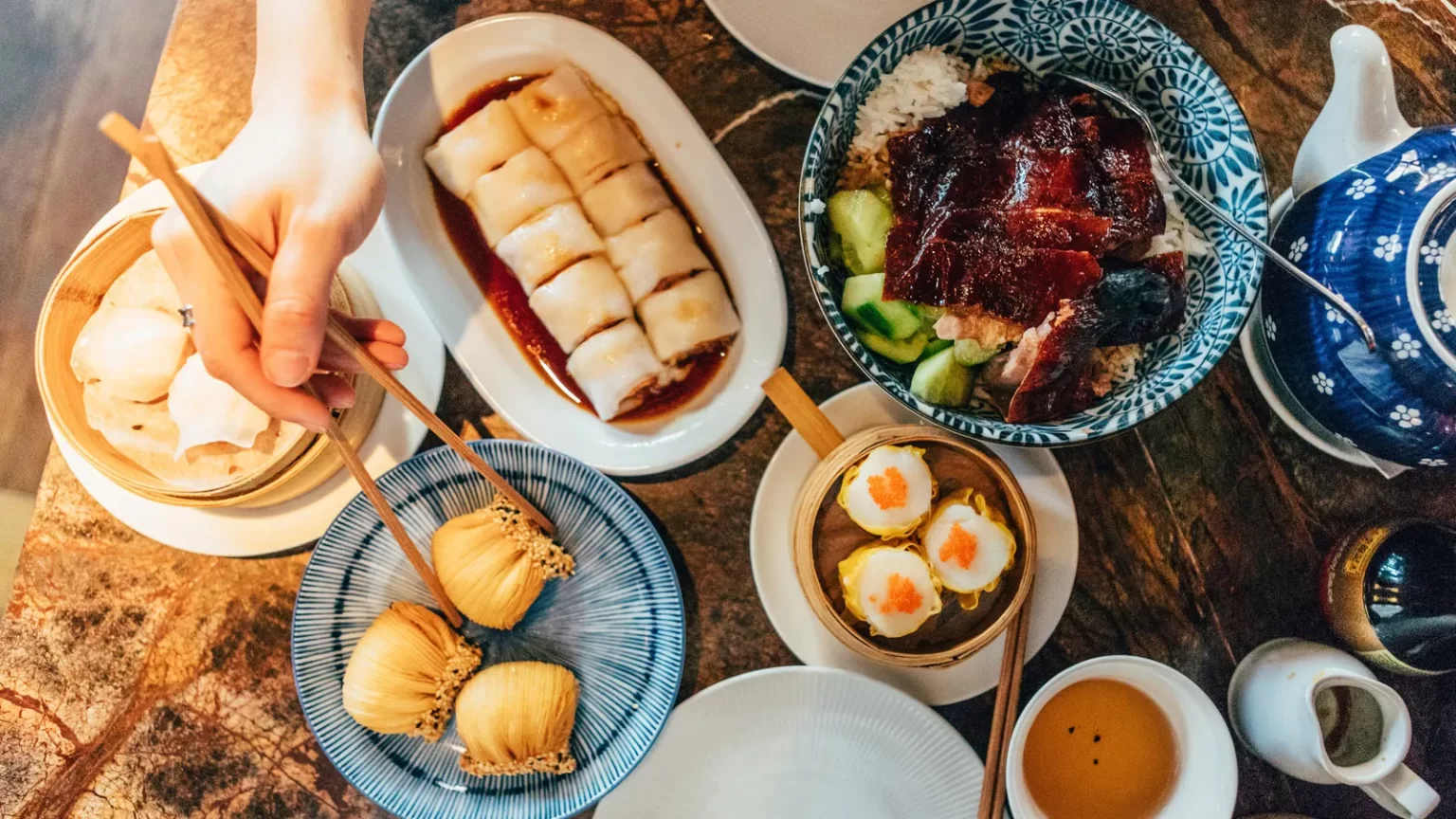With around 17,000 places to eat in Hong Kong, you’re never far from a steaming bowl of something delicious. The city’s culinary landscape features world-class Michelin-starred tasting menus and fine dining, but the majority of restaurants are humble, local spots where the prices are low and the proudly Cantonese dishes are comforting.
The combination of cramped home kitchens and expensive groceries means that for many, dining out is more cost-efficient than cooking at home. Consequently, brightly lit tea houses and noodle shops, busy takeaway stands and full-service restaurants all compete for an annual dining market where diners spend the equivalent of almost £9.2bn.
If you ask almost anyone in the city, they’ll invariably have their own suggestion of where to find the best version of a particular dish. We’re confident, however, that you can’t go wrong at these eight tried-and-tested spots serving beloved Cantonese classics, from bamboo steamers filled with dumplings to glistening roast meats on rice.
The prawn wonton noodles at Tsim Chai Kee are both delicious and affordable (Credit: Redonion1515/Getty Images)
1. Prawn wonton noodles: Tsim Chai Kee
ADVERTISEMENT
Accolades from past editions of the Michelin Guide are proudly displayed on the walls and in the window at Tsim Chai Kee, located just off the famed outdoors escalator in the heart of Central district. It may come as a surprise, then, that prices for their classic Cantonese comfort food of prawn wonton noodles are decidedly wallet-friendly.
Just HK$38 (£4) buys you a generous bowl featuring three handmade dumplings each the size of a golf ball. Two prawns are used per dumpling, chopped up and mixed with fatty pork and dried mandarin peel to bind it, adding subtle notes of flavour as you bite through the soft folds of dumpling skin for a textural masterpiece.
Underneath sit bouncy egg noodles, while the fragrant broth is made from simmered pork bones with prawn heads, shells and air-dried cod, before the bowl is finished with a scattering of chopped spring onions.
As steam mists up the kitchen, visible through a service hatch, chefs also plate up noodles with two other topping options: sliced beef or fish balls made from dace fish – or even all three in the same bowl, if you’re feeling hungry.
Address: Shop B, G/F, 98 Wellington St, Central
Phone: +852 2850 6471
Be sure to order a Hong Kong milk tea with your pineapple bun at Kam Wah Cafe & Bakery (Credit: Hong Kong Tourism Board)
2. Pineapple bun: Kam Wah Cafe & Bakery
Pineapple buns are a popular local snack and few spots can match Kam Wah Cafe & Bakery, especially when it comes to history. This year marks half a century since Chan Tim-wo, the son of a baker, opened his cafe serving the delicious sweet rolls in the always-on Mong Kok district, where a constant line of customers testifies to their popularity.
Chan’s recipe, passed down by his father-in-law, has more than stood the test of time. While you’d expect the spiky tropical fruit to be the hero, confusingly there is, in fact, no pineapple at all in pineapple buns. The name actually comes from their crusty domed appearance that resembles pineapple skin.
That flaky, crunchy sweet crust atop the soft and fluffy bun is definitely best experienced hot from the oven, complete with a thick, cold pat of butter that quickly melts. To accompany, a cup of strong Hong Kong milk tea, made with either evaporated or condensed milk, is a non-negotiable.
As buttery aromas waft around you, check out the other options, including their egg tarts. But just make sure you know what you’re ordering before calling staff over as service can generously be described as “brisk”.
Address: 45-47 Bute St, Mong Kok
Phone: +852 2392 6830
Instagram: @kamwahcafe
Although there’s numerous dim sum options in Hong Kong, Dim Dim Sum has won legions of fans (Credit: Chris Dwyer)
3. Dim Sum: Dim Dim Sum
Arguably Hong Kong’s most famous culinary export, dim sum translates from Cantonese as “touch the heart” and few food traditions are as iconic. Options abound, including historic Luk Yu Tea House with its Art Deco interiors, or Maxim’s Palace City Hall, where steaming baskets of dumplings, rice noodle rolls and more are served from trolleys pushed around the vast dining room.
DIM SUM TIPS
When eating dim sum, never pour your own tea before serving someone else first. Say thanks when someone does so for you by tapping three fingers on the table next to the cup. It’s shorthand for bowing – and has a great backstory, according to some.
But a relative newcomer in the form of Dim Dim Sum has won legions of fans since opening in 2010. Despite being open from 11:00 until 02:00, a line outside the door is pretty much always guaranteed – but it’s worth the wait.
Ordering is a breeze from the tick-box menu, which includes dozens of dishes from steamed rice noodle rolls called cheung fun generously stuffed with barbecued pork and courgette to delicate shrimp har gow dumplings with an almost translucent skin.
Chicken feet may not to be everyone’s taste but here they’re a textural joy, while lo mai gai, steamed glutinous rice and chicken wrapped in lotus leaf, is another great rendition. Don’t miss their char siu bao, fluffy steamed buns hiding fabulously sticky and sweet roast pork.
The air conditioning here can feel Arctic, so don’t linger too long before tucking in. Nobody likes a cold dumpling.






